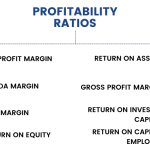
Life insurance is a financial cover for unforeseen events related to human life. It is a legally binding agreement between you and the insurance provider. In this contract, you undertake to pay a specified premium for a fixed period in exchange for life coverage. The insurer, in turn, agrees to provide monetary benefits to your beneficiaries if any of the unfortunate incidents covered under the agreement occur. Such benefits are demarcated in the contract terms, called the policy document.
Life Insurance Companies offer a range of life insurance products that satisfy various insurance needs. From pure life protection of a Term Insurance Plan to the dual benefits of insurance and investment in Savings Plans, you can choose from a range of life insurance products to ensure that your family is well taken care of, even in your absence.
Thus, a life insurance policy ensures that the loss of your income does not hamper your family’s financial standing. You can use savings-based life insurance products as investment tools to create wealth and fund long-term financial goals. Many such products can also act as a secondary source of income. Tax savings on the premiums paid is another perquisite of buying such insurance policies.
Some important features of life insurance that everyone must know
There are different types of riders in insurance. Some of the popular ones include:
- Life insurance cover: The monetary sum that can substitute for the loss of future income.
- Sum assured: The amount the insurer guarantees to pay in the event of a loss.
- Maturity benefits: The lump sum paid at the end of the policy term in traditional and market-linked life insurance policies.
- Policy term: The duration for which the life cover stays in place. The insurer pays the benefit if any loss occurs during this time.
- Premium payment term: The period for which you have to pay the premium for your life cover.
- Premium payment frequency: The interval at which you have to pay the premium, e.g. monthly, quarterly, half-yearly or annually.
- Fixed premium: The premium amount as determined at the time of purchase. It remains fixed throughout the payment term.
- Surrender value: The amount payable on your exit from the policy before the maturity date but after the lock-in period. It is not applicable for term insurance.
- Cash value: The savings component of your investment insurance that accumulates over time. Insurers invest a part of your investment insurance premium into conservative-yield ventures. The profits earned build the cash value.
- Paid-up value: The reduced sum assured payable at maturity after premiums are paid beyond a defined period but not to the full term.
Paid-up Value = (Number of Premiums Paid / Total number of Premiums Payable) X Sum Assured - Loan on policy: Borrowing against your traditional life insurance policy using the cash value as collateral. The insurer sanctions a percentage of the surrender value as a loan.
- Multiple payout options: Choice of claim settlement through a lump sum or as regular payments.
- Mortality charge: The cost of insuring your life based on your age, gender, and prevalent life expectancy ratio.
- Loyalty additions: Financial rewards from the insurer in favour of staying invested for a long duration.
- Wealth boosters: Increments to your insurance benefits that the insurer pays with some policies.
- Bonus: Share of profits earned through investments made with the premium amount, passed on to investors as dividends.
- Annuity/ Income: Monthly or yearly incomes are offered in some investment insurance plans.
- Riders: Optional add-ons to your life coverage at nominal rates over the base premium. Examples include accidental death benefits, waiver of premium, critical illness cover etc.
- Accidental death benefit: Extra payout over the base sum assured in case of accidents.
- Waiver of premium: Rider that allows you to not pay future premiums following any permanent disability or after the death of the guardian paying for a minor’s insurance cover. The insurer bears the premiums, and the life insurance cover continues throughout the policy term.
- Critical illness cover: The option to obtain payouts on the first detection of medical conditions listed under the scope of the rider.
Types of life insurance
- Protection plans
- Savings and investment plans
- Child plans offer life insurance for children that help build an adequate corpus for their future.
- Retirement plans are pension plans that ensure financial independence even after you cease working for wages. You can assemble comprehensive retirement funds through guaranteed additions and bonuses during your peak working years. After retirement, you can instate that capital into annuity funds and enjoy a regular income.
- Whole life insurance Such plans offer risk protection throughout your life. Companies offer policies with 99 years as the maximum age of entry. These policies can provide for your spouse’s old age needs.
- Endowment plans Such plans combine risk cover with investment. The life cover protects your family from financial distress. Moreover, if you survive the policy tenure, you get your outlay back along with returns and bonuses, reaping profits.
Companies offer different types of savings and investment life insurance plans:
- A) Unit-linked life insurance policies (ULIP) These savings schemes allow you to speculate in the capital market. You can choose the funds, debts, equity, or a balanced combination of both types, according to your capacity for handling risks. The option to move your money among the various asset types protects your capital and helps you maximize your profits.
- B) Participating ‘with-profits’ plans shares parts of its surplus earnings with the investors through dividends on such policies. Thus, these plans ensure capital appreciation, along with life insurance.
- C) Non-participating non-linked plans – specified maturity proceeds, Companies guarantee the investment benefit in such schemes.
Policies that fall under participating or non-participating categories can further be classified as follows:
- Money-back plans – receive parts of your sum assured at regular intervals throughout the policy period. The balance sum, or assembled bonuses, is disbursed at maturity.
- Income plans – Life offers alternative sources of earnings through policies that pay guaranteed monthly or yearly incomes. Some programs even increase the income year on year. Moreover, accrued bonuses paid at maturity augment your savings.
- Guaranteed savings plans – Life guarantees the benefits of such policies, providing certainty of returns.
Insurance riders
Companies enable you to personalize the protection as per your individual needs through riders. Some examples of such riders include:
- Critical Illness cover
- Accidental Death Benefit
- Waiver of Premium on permanent disability
How does a life insurance policy work?
- What is life insurance: It is the pledge from your insurance provider to pay a specified amount to your beneficiary in case of an unfortunate incident. In return, you pay a pre-decided premium to the insurance provider. Paying premiums on a regular basis or all at once at the time of purchase is essential to keep the policy in force.
- How the insurers decide the premium: Through the process of underwriting, the insurer assesses risks involved in insuring your life. They ensure that the cost of the life cover they propose matches the risk they face in providing the coverage. For this reason, they put forward a detailed questionnaire about your health status and your workplace conditions. You may have to undergo a medical examination as well. The insurers set the best life insurance premium for you accordingly. Also, life risks amplify with age and premiums cost more when your age increases.
- When to pay the premium: You can opt to pay the premium upfront when you buy life insurance. You can also pay on a monthly, yearly, half-yearly, or quarterly basis depending on the terms of your policy.
- How your beneficiary receives the benefits: If an unwanted event happens, your nominated recipient must file a claim with a duly filled intimation form and the original policy document. The insurance company verifies the claim validity in line with the policy terms. If everything is in order, the insurer releases the stipulated payout.
- When insurers can reject claims: Suppressed or false information in the application form or a lapsed policy can be causes for refusal.
- How term insurance works: The life cover lasts for the period defined at purchase. Your nominee receives the sum stated in the policy when you meet an untoward outcome. There is no cash value, and if you survive the policy term, the insurer makes no payment. It is the most inexpensive form of life insurance providing sizeable life coverage at premiums that fit your budget.
- How traditional life insurance works: The sum assured is defined at inception. However, such policies acquire a cash value with time since a part of the premium earns interest, and the insurer shares the profit with you. You can access this amount as regular income during the policy period or let it accumulate up to maturity. If an unwanted event occurs, your family received the death benefits.
- How unit-linked life insurance works: The sum assured is not fixed. The insurer invests your premium in the capital market. You can choose the funds where your money goes based on your risk appetite, and market performance decides the final yields. Thus, such life insurance plans present the potential for substantial profits. Moreover, your nominee receives a payout in case of an untimely loss.
How to choose a life insurance policy and coverage for you?
- Work out the coverage type best suitable for you. Before buying, it is vital to determine the goals that you plan to achieve through this financial tool. Once you identify the needs, it will be simpler to choose the best life insurance policy that covers the essential aspects.
- If you need coverage that generates liquidity, you can consider an investment insurance policy that acquires surrender value. You can take loans or partially withdraw funds from it.
- A money-back plan may work well for you if you have specific time frames for your short-term life goals.
- An income plan can act as a source of income after your regular wages stop.
- Those looking for quick profits and do not have hefty financial liabilities can invest in market-linked insurance.
- If you wish to protect your retirement corpus and make decent profits, you can buy non-participating policies with guaranteed returns.
- In case your primary goal involves protecting your family from financial duress, term insurance can be the best life insurance plan for you.
- Determine how long you need life protection.
- You may need insurance for a defined period, for instance, until the time your children acquire financial independence or for the duration of your home loan. In this case, term insurance would be appropriate.
- Otherwise, if you have to provide for financial dependents up to an advanced age, you can consider whole life insurance. It can act as a source of income for your spouse.
- For pension planning, you can count the number of years until your retirement and select a limited premium payment term accordingly.
- Calculate your ideal sum assured.
- Review your family’s current living costs
- Gauge how long your dependents may require income replacement
- Multiply the two values
- Add your outstanding debts, e.g. house mortgage, car loans, existing student loans, credit card dues, etc. to the product
- Include the expected expenses for your children’s education or other long-term expenditure you can foresee.
- Deduct the value of your existing investments
- Select according to your budget.
- Customize your coverage with riders.
- Consult a life insurance advisor.
What are the Documents Required to Buy Life Insurance?
- Admission of age
- Driving License
- Birth certificate
- School leaving certificate
- Passport
- PAN card
- Driving license
- Aadhaar Card
- Photo ID Proof
- Passport
- PAN card
- Driving license
- Election Photo Identity Card (EPIC)
- Aadhaar Card
- Residence proof
- Passport
- Driving License
- Aadhaar Card
- Voter ID
- Updated bank account statement/ passbook
- Utility bills for electricity, gas, or telephone
- Ration card
- Rental agreement
- Income documents
- Latest salary slips
- Current Form 16
- Previous 3 years’ Income Tax Returns
- Audited profit/loss statements
- Employer’s certificate
- Last 6 months’ bank statement
- Passport-sized photographs
- Medical records
- As specified by the insurer
How to buy the perfect life insurance policies for yourself?
- Calculate the premium: After you decide on the life insurance coverage you need, use online premium calculators to compute the required premium. Compare policies and select the one that offers adequate coverage at an affordable premium.
- Analyze the benefits: for the following
- any guarantee on the returns
- financial rewards like loyalty additions or assured wealth boosts
- the flexibility of investment, e.g. fund switch, increase in coverage
- associated charges
- availability of loans or partial withdrawal options
- Check the provider’s credibility: Ensure that the insurance company has a claim settlement ratio as proof of reliability. Also, a high solvency ratio indicates sufficient cash flow for honouring claims. These checks will ascertain hassle-free claim settlement.
- Fill up the proposal form: After you pick the best life insurance plan for your needs, fill up the application form. Mention relevant details about your age, health, personal habits, and profession. Take care not to conceal any vital fact or furnish false information to avoid claim rejections later.
- Select a convenient premium payment option and term: Consider your finances before making long-term financial commitments. Single premium and limited pay options can work well for individuals with fluctuating incomes. With a regular payment scheme, select the frequency that best matches your flow of funds.
- Name a nominee: Specify the person whom you intend to benefit with the proceeds from your life insurance to avoid future disputes.
- Buy insurance online: You can avoid delays and elaborate paperwork through online purchases.
- Utilize the free-look period: Go through the policy documents carefully and understand the exclusions. You can return the policy within this phase if you find the stipulations do not align with your requirements.
What are the benefits of buying life insurance policies?
- Life coverage Life insurance shields your loved ones against financial exigencies when your income can no longer support them.
- Tax savings A valuable aspect of life insurance in India is that it entitles you to deductions against premiums paid under Section 80C of the Income Tax Act, 1961. Such rebates reduce your taxable income, enabling you to save on taxes. The returns are also tax-exempt subject to the provisions of Section 10(10D).
- Wealth creation Life insurance plans with investment features help you stockpile funds for your long-term financial goals, e.g. child’s education.
- Emergency funds through loans You can avail of low-interest loans against your traditional endowment policy and access funds at short notice.
- Extra perks Additional life cover in accidents and waiver or premiums for permanent disabilities are the added benefits of life insurance riders.
- Retirement planning You can park your savings in life insurance and ensure consistent income after retirement.
- Infirmity protection You can add critical illness riders to your life insurance policy and arrange long-term healthcare funds for dangerous diseases.
For Insurance, MF, Equities, FDs or any other investment you may contact upvey.com. For a career in this sector, you can comment for detailed information and join.
Financial and Business expert having 30+ Years of vast experience in running successful businesses and managing finance.




